Research That Works for Everyone, Scaling Insights On-Demand
Strategic User Experience
Research Operations
Systems Design
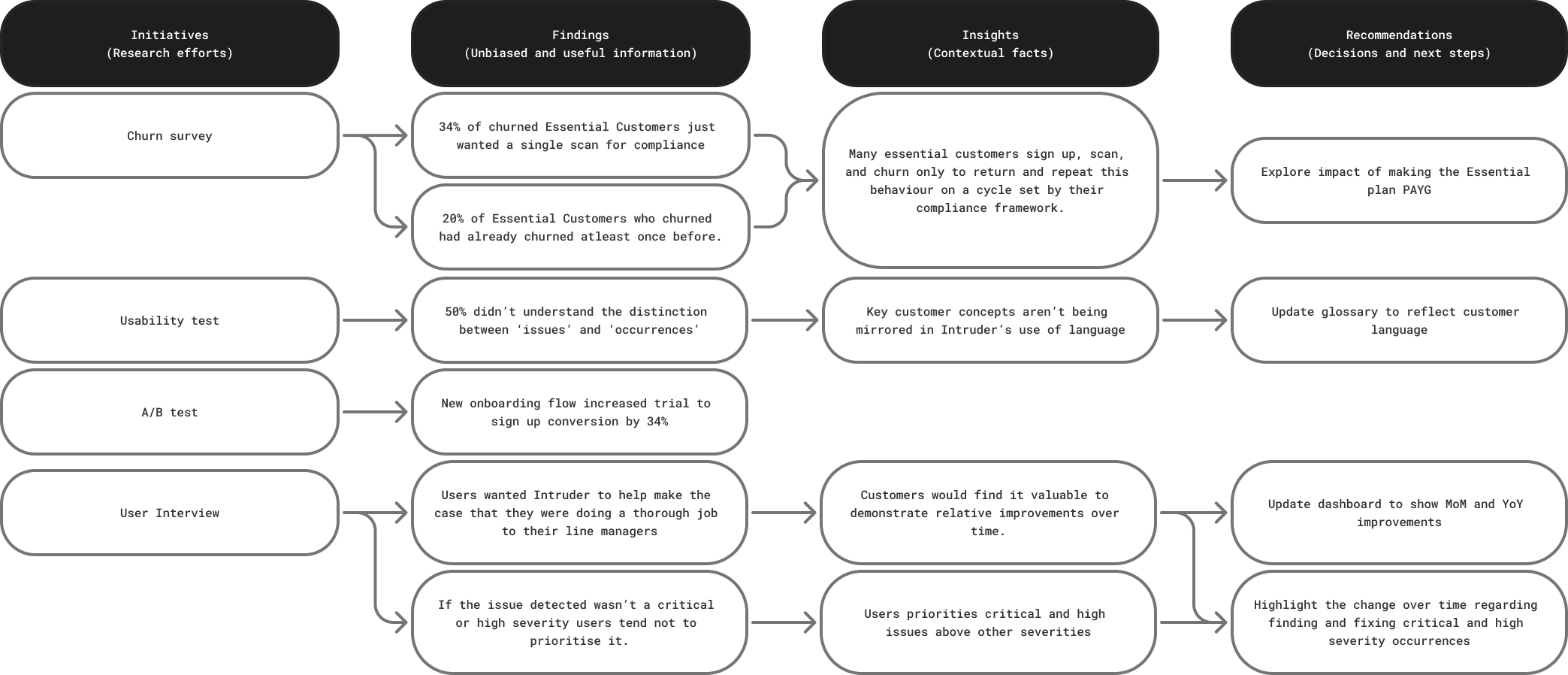
Overview
I introduced lightweight research operations across the product team, helping PMs and designers run their own studies, cutting time-to-insight, and improving consistency.
By implementing research playbooks, coaching, and atomic insight tagging, we transformed research from a bottleneck into a shared capability across the business.
Involvement
Lead designer and researcher
~2 month duration (Oct - Nov ‘24)
Notion, Count, Dovetail, Intercom, Hubspot, and Jiminny
Impact
Weekly
Interviews with customers
>80%
Research conducted without external dependencies
100%
Product and Design team members functioning as PWDRs (People who do research)
Challenge
Research at Intruder was slow, inconsistent, and siloed. PMs and designers couldn't run their own studies, creating bottlenecks for the data team on simple validation requests. Most research was reactive, conducted after project commitments were made. Insights were tribal knowledge, often lost in outdated decks with no systematic reuse.
Approach
I interviewed internal stakeholders and mapped the research workflow. The process was perceived as intimidating and overly dependent on specialists, with repetitive low-complexity requests highlighting a need for better enablement.

System Design
- Research Playbooks: Created guided templates for interviews, surveys, and usability testing, covering recruitment to synthesis
- Intruder Labs: Launched an opt-in pool of pre-consented customers, dramatically reducing recruitment time
- Atomic Research System: Built interconnected databases in Notion (Initiatives → Findings → Insights → Recommendations - later adding AI-powered connection mapping). Enabling asynchronous collaboration with clear traceability.
- Insight Decay: Introduced expiration dates on recommendations to prevent decisions based on stale data
- Culture & Capability Building: Ran coaching sessions for PMs and designers, helping them conduct and document research independently.
- Dedicated Focus: Advocated for dedicated research time in team OKRs, normalising research as everyone's responsibility, not just specialists'.


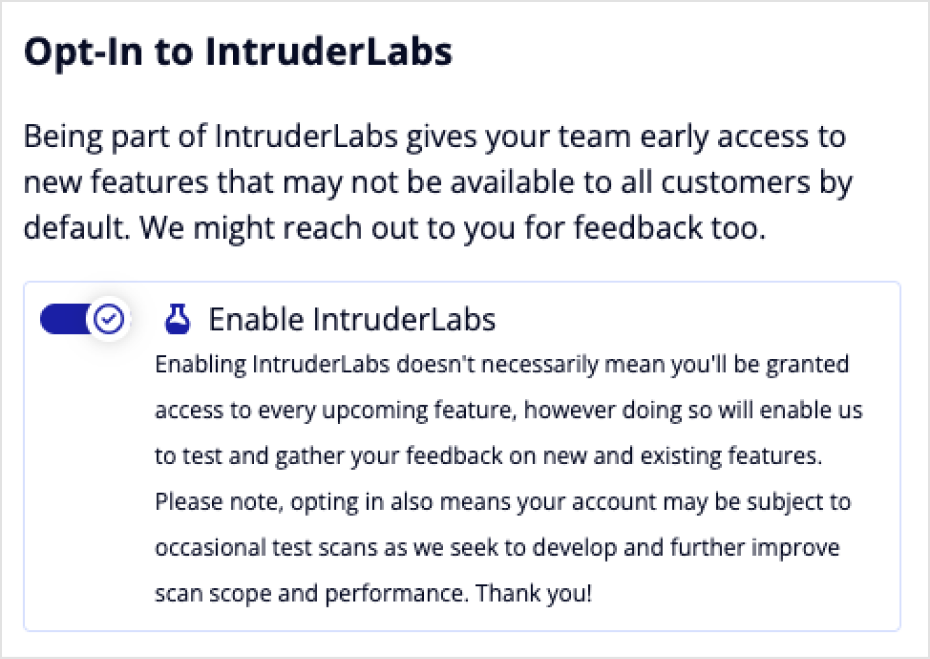
Impact
Operational Improvements
- Research became a shared responsibility, eliminating bottlenecks
- AI tools dramatically reduced synthesis time while mapping connections between findings
- Conversational AI interface allows teams and stakeholders to sense-check ideas against research insights
- PMs and designers began running effective discovery work independently
- Every Product Manager and Designer owned a distinct aspect of research they were held accountable for
- Data team freed from repetitive requests to focus on strategic work
Cultural Shift
- Rate of learning became a shared metric across product and design
- Tagging and structure enabled building on past insights, increasing relevance and reusability
- Research evolved from reactive validation to proactive strategic input
- This made the production of project proposals much quicker to produce and evidence
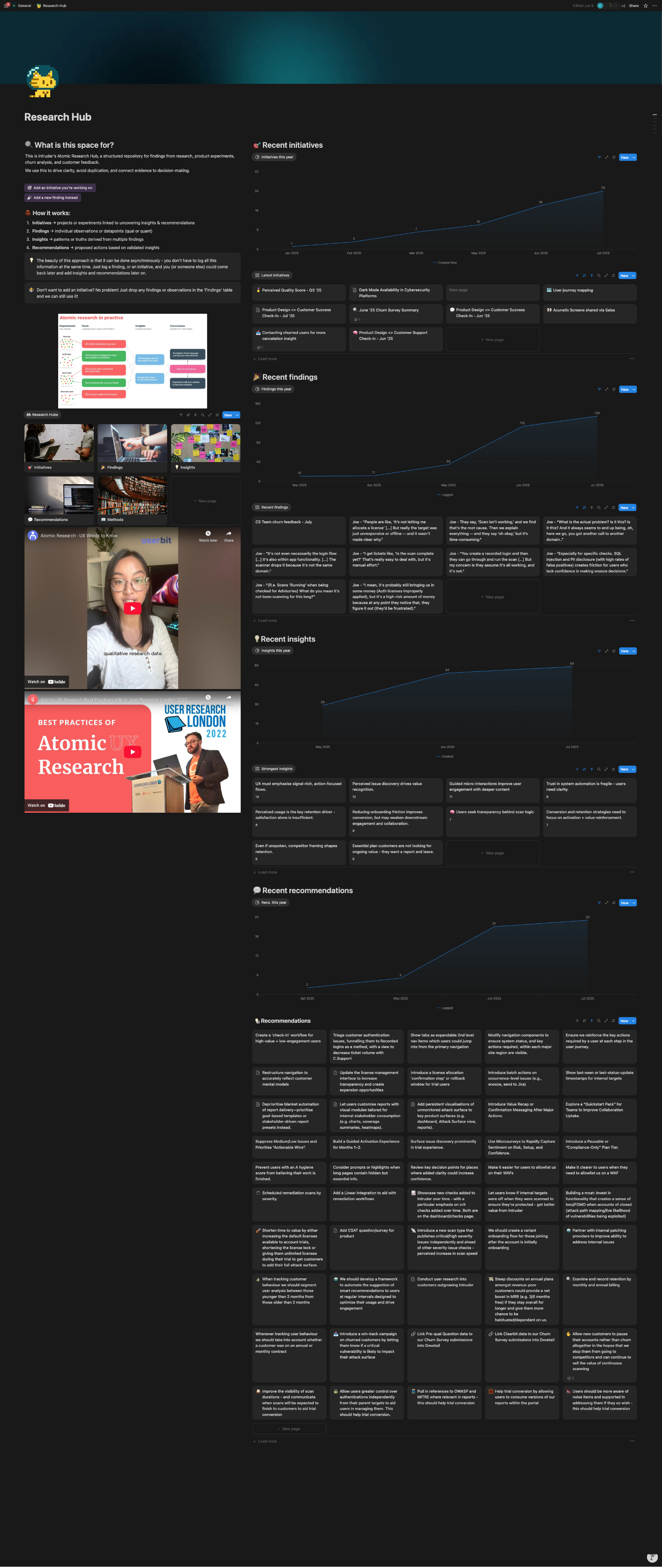



System Architecture
The atomic research structure with AI-powered synthesis created a living, conversational research memory:
- Findable: Structured tagging and AI-mapped connections between insights
- Traceable: Clear lineage from research questions to recommendations
- Conversational: Teams and stakeholders can query the system to validate ideas against existing research
- Reusable: Past insights automatically surface relevant connections for new initiatives
- Current: Insight decay prevented outdated assumptions from persisting
- Scaleable: Gradual introduction of AI allowed us to scale insight and recommendation generation consistently.
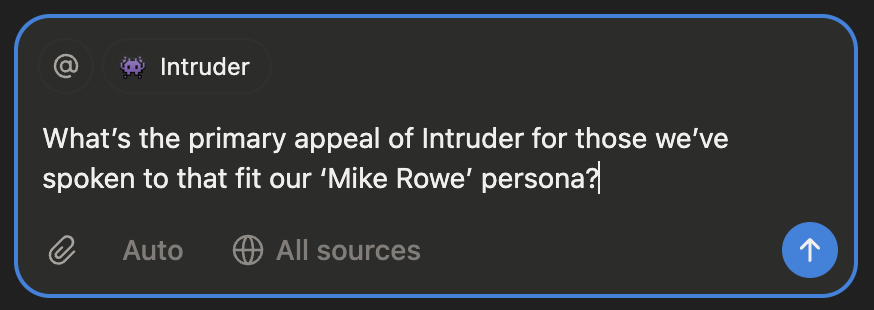
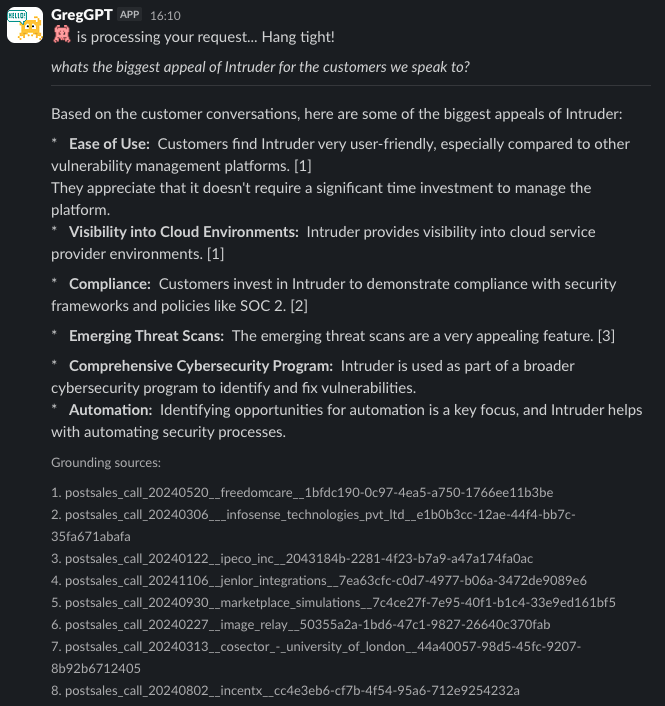
All Quantitative data lives in Count. All Qualitative data lives in Dovetail. We pulled both together into Notion for synthesis. Customers could use AI within these tools, or draw upon a company chatbot, which could access this data to draw together insights or produce recommendations.
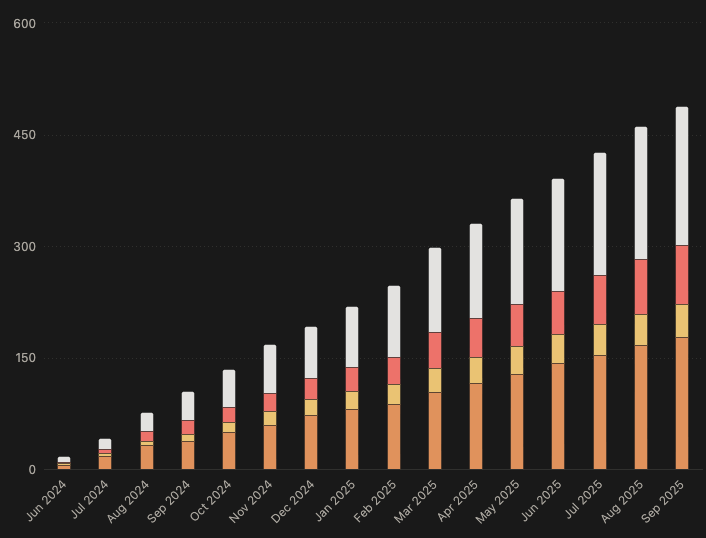

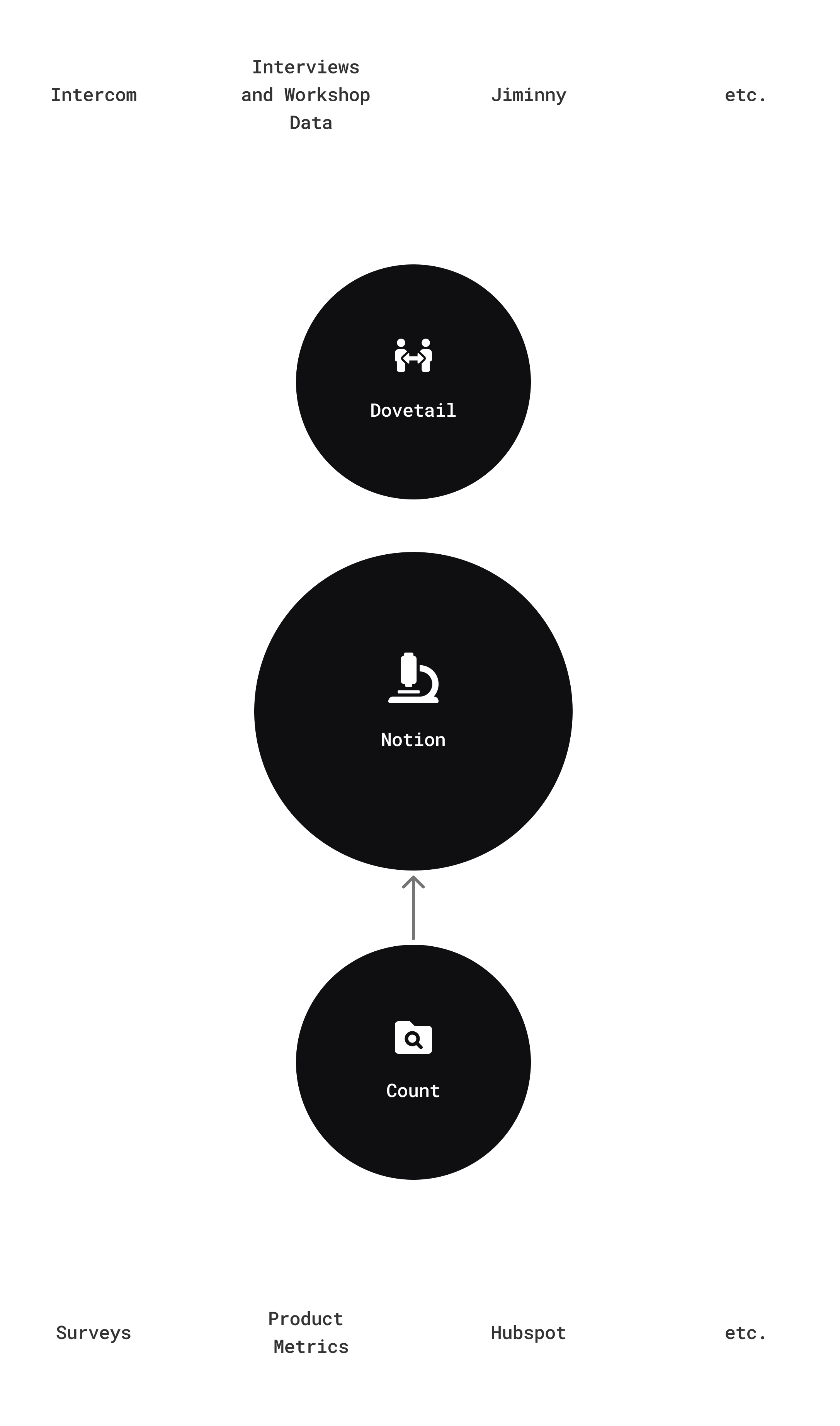
Notion allowed us to organise the data imported to Count or Dovetail, with this we could produce simple data no-code visualisations enabled our People Who Do Research (PWDRs) to spot patterns and trends which could be used to generate hypothesis for future research or evidence recommendations.
Outcome
Built a scalable, mature research practice supporting both rapid iteration and long-term strategic thinking. Research transformed from a specialist bottleneck into a distributed capability that accelerated learning across the organisation.
We did all this whilst only drawing upon 0.1 FTE (5 hours) a week per Product Manager or Designer.
Key Learnings
- Operational research scales impact: Making research accessible multiplies its influence beyond individual studies
- Structure enables quality: Democratisation doesn't sacrifice rigour when supported by clear frameworks
- Confidence is the real barrier: The biggest blocker isn't tooling, it's people feeling equipped to ask better questions
- AI amplifies human insight: Technology should accelerate synthesis and surface connections, not replace human judgment
- Conversational systems increase adoption: When stakeholders can easily query research, they're more likely to use it in decision-making
Interested in discussing this project?
Research That Works for Everyone, Scaling Insights On-Demand
Strategic User Experience
Research Operations
Systems Design

Overview
I introduced lightweight research operations across the product team, helping PMs and designers run their own studies, cutting time-to-insight, and improving consistency.
By implementing research playbooks, coaching, and atomic insight tagging, we transformed research from a bottleneck into a shared capability across the business.
Involvement
Lead designer and researcher
~2 month duration (Oct - Nov ‘24)
Notion, Count, Dovetail, Intercom, Hubspot, and Jiminny
Impact
Weekly
Interviews with customers
>80%
Research conducted without external dependencies
100%
Product and Design team members functioning as PWDRs (People who do research)
Challenge
Research at Intruder was slow, inconsistent, and siloed. PMs and designers couldn't run their own studies, creating bottlenecks for the data team on simple validation requests. Most research was reactive, conducted after project commitments were made. Insights were tribal knowledge, often lost in outdated decks with no systematic reuse.
Approach
I interviewed internal stakeholders and mapped the research workflow. The process was perceived as intimidating and overly dependent on specialists, with repetitive low-complexity requests highlighting a need for better enablement.

System Design
- Research Playbooks: Created guided templates for interviews, surveys, and usability testing, covering recruitment to synthesis
- Intruder Labs: Launched an opt-in pool of pre-consented customers, dramatically reducing recruitment time
- Atomic Research System: Built interconnected databases in Notion (Initiatives → Findings → Insights → Recommendations - later adding AI-powered connection mapping). Enabling asynchronous collaboration with clear traceability.
- Insight Decay: Introduced expiration dates on recommendations to prevent decisions based on stale data
- Culture & Capability Building: Ran coaching sessions for PMs and designers, helping them conduct and document research independently.
- Dedicated Focus: Advocated for dedicated research time in team OKRs, normalising research as everyone's responsibility, not just specialists'.



Impact
Operational Improvements
- Research became a shared responsibility, eliminating bottlenecks
- AI tools dramatically reduced synthesis time while mapping connections between findings
- Conversational AI interface allows teams and stakeholders to sense-check ideas against research insights
- PMs and designers began running effective discovery work independently
- Every Product Manager and Designer owned a distinct aspect of research they were held accountable for
- Data team freed from repetitive requests to focus on strategic work
Cultural Shift
- Rate of learning became a shared metric across product and design
- Tagging and structure enabled building on past insights, increasing relevance and reusability
- Research evolved from reactive validation to proactive strategic input
- This made the production of project proposals much quicker to produce and evidence




System Architecture
The atomic research structure with AI-powered synthesis created a living, conversational research memory:
- Findable: Structured tagging and AI-mapped connections between insights
- Traceable: Clear lineage from research questions to recommendations
- Conversational: Teams and stakeholders can query the system to validate ideas against existing research
- Reusable: Past insights automatically surface relevant connections for new initiatives
- Current: Insight decay prevented outdated assumptions from persisting
- Scaleable: Gradual introduction of AI allowed us to scale insight and recommendation generation consistently.


All Quantitative data lives in Count. All Qualitative data lives in Dovetail. We pulled both together into Notion for synthesis. Customers could use AI within these tools, or draw upon a company chatbot, which could access this data to draw together insights or produce recommendations.



Notion allowed us to organise the data imported to Count or Dovetail, with this we could produce simple data no-code visualisations enabled our People Who Do Research (PWDRs) to spot patterns and trends which could be used to generate hypothesis for future research or evidence recommendations.
Outcome
Built a scalable, mature research practice supporting both rapid iteration and long-term strategic thinking. Research transformed from a specialist bottleneck into a distributed capability that accelerated learning across the organisation.
We did all this whilst only drawing upon 0.1 FTE (5 hours) a week per Product Manager or Designer.
Key Learnings
- Operational research scales impact: Making research accessible multiplies its influence beyond individual studies
- Structure enables quality: Democratisation doesn't sacrifice rigour when supported by clear frameworks
- Confidence is the real barrier: The biggest blocker isn't tooling, it's people feeling equipped to ask better questions
- AI amplifies human insight: Technology should accelerate synthesis and surface connections, not replace human judgment
- Conversational systems increase adoption: When stakeholders can easily query research, they're more likely to use it in decision-making
Interested in discussing this project?
Research That Works for Everyone, Scaling Insights On-Demand
Strategic User Experience
Research Operations
Systems Design

Overview
I introduced lightweight research operations across the product team, helping PMs and designers run their own studies, cutting time-to-insight, and improving consistency.
By implementing research playbooks, coaching, and atomic insight tagging, we transformed research from a bottleneck into a shared capability across the business.
Involvement
Project manager
~2 month duration (Oct - Nov ‘24)
Notion, Count, Dovetail, Intercom, Hubspot, and Jiminny
Impact
Weekly
Interviews with customers
>80%
Research conducted without external dependencies
100%
Product and Design team members functioning as PWDRs (People who do research)
Challenge
Research at Intruder was slow, inconsistent, and siloed. PMs and designers couldn't run their own studies, creating bottlenecks for the data team on simple validation requests. Most research was reactive, conducted after project commitments were made. Insights were tribal knowledge, often lost in outdated decks with no systematic reuse.
Approach
I interviewed internal stakeholders and mapped the research workflow. The process was perceived as intimidating and overly dependent on specialists, with repetitive low-complexity requests highlighting a need for better enablement.

System Design
- Research Playbooks: Created guided templates for interviews, surveys, and usability testing, covering recruitment to synthesis
- Intruder Labs: Launched an opt-in pool of pre-consented customers, dramatically reducing recruitment time
- Atomic Research System: Built interconnected databases in Notion (Initiatives → Findings → Insights → Recommendations - later adding AI-powered connection mapping). Enabling asynchronous collaboration with clear traceability.
- Insight Decay: Introduced expiration dates on recommendations to prevent decisions based on stale data
- Culture & Capability Building: Ran coaching sessions for PMs and designers, helping them conduct and document research independently.
- Dedicated Focus: Advocated for dedicated research time in team OKRs, normalising research as everyone's responsibility, not just specialists'.



Impact
Operational Improvements
- Research became a shared responsibility, eliminating bottlenecks
- AI tools dramatically reduced synthesis time while mapping connections between findings
- Conversational AI interface allows teams and stakeholders to sense-check ideas against research insights
- PMs and designers began running effective discovery work independently
- Every Product Manager and Designer owned a distinct aspect of research they were held accountable for
- Data team freed from repetitive requests to focus on strategic work
Cultural Shift
- Rate of learning became a shared metric across product and design
- Tagging and structure enabled building on past insights, increasing relevance and reusability
- Research evolved from reactive validation to proactive strategic input
- This made the production of project proposals much quicker to produce and evidence
System Architecture
The atomic research structure with AI-powered synthesis created a living, conversational research memory:
- Findable: Structured tagging and AI-mapped connections between insights
- Traceable: Clear lineage from research questions to recommendations
- Conversational: Teams and stakeholders can query the system to validate ideas against existing research
- Reusable: Past insights automatically surface relevant connections for new initiatives
- Current: Insight decay prevented outdated assumptions from persisting
- Scaleable: Gradual introduction of AI allowed us to scale insight and recommendation generation consistently.

All Quantitative data lives in Count. All Qualitative data lives in Dovetail. We pulled both together into Notion for synthesis. Customers could use AI within these tools, or draw upon a company chatbot, which could access this data to draw together insights or produce recommendations.



Notion allowed us to organise the data imported to Count or Dovetail, with this we could produce simple data no-code visualisations enabled our People Who Do Research (PWDRs) to spot patterns and trends which could be used to generate hypothesis for future research or evidence recommendations.
Outcome
Built a scalable, mature research practice supporting both rapid iteration and long-term strategic thinking. Research transformed from a specialist bottleneck into a distributed capability that accelerated learning across the organisation.
We did all this whilst only drawing upon 0.1 FTE (5 hours) a week per Product Manager or Designer.
Key Learnings
- Operational research scales impact: Making research accessible multiplies its influence beyond individual studies
- Structure enables quality: Democratisation doesn't sacrifice rigour when supported by clear frameworks
- Confidence is the real barrier: The biggest blocker isn't tooling, it's people feeling equipped to ask better questions
- AI amplifies human insight: Technology should accelerate synthesis and surface connections, not replace human judgment
- Conversational systems increase adoption: When stakeholders can easily query research, they're more likely to use it in decision-making
Interested in discussing this project?